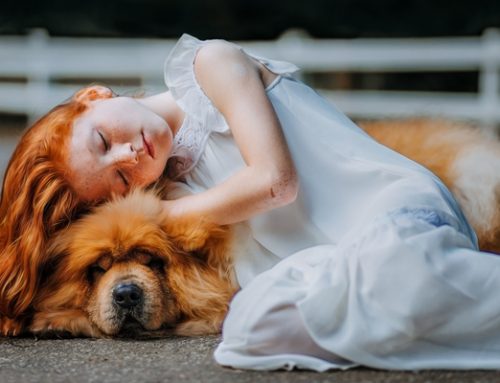Dealing with nervousness is all too familiar to many adults. Unfortunately, it may also be familiar to our pets. The American Kennel Club describes nervousness in cats and dogs as the anticipation of future dangers that result in normal body reactions associated with fear.1 Our pets have feelings and intelligent brains similar enough to our own. So it’s no surprise that, much like humans, our much-loved dogs and cats can become nervous about unknown or imagined threats.
What’s behind nervous dog behavior?
One of the more common causes of a nervous dog is fear. Fear-related nervousness can be triggered by numerous changes in your dog’s immediate environment, such as loud noises, an unfamiliar environment with other animals, or simply a trip to the veterinarian’s office.
Another common cause of nervousness is separation. Separation nervousness is very common in dogs due to their social habits. Dogs love to socialize with other animals, as well as their owners. So when a dog is separated from their family, they might become very uncomfortable with the new environment.
Finally, the third most common factor of nervousness in dogs is aging. Age-related nervousness happens to affect older dogs who experience declines in memory, learning, perception, and awareness.
Signs that a dog is nervous:
It can be tough to determine whether your dog is feeling nervous, excited, threatened, or just in need of more adjustment and training. If left unaddressed, nervousness in dogs can lead to serious behavioral problems, such as disobedience, aggression towards their owner, and other serious issues. Identifying the symptoms is the first step to addressing nervousness in dogs.
Common signs of nervousness in dogs include:
- Aggression
- Urinating or defecating in the house
- Drooling
- Panting
- Destructive Behavior
- Depression
- Excessive barking
- Pacing
- Restlessness
- Repetitive or compulsive behaviors1
Ways to handle nervousness in dogs
Handling nervousness can be also be overwhelming if you don’t know where the problem stems from. If you’ve noticed your dog is constantly nervous, a simple first step would be to talk with a vet. A vet can help identify the type of nervousness your pup is suffering from, as well as any possible triggers or causes. A vet can also help rule out any other medical conditions that could be causing any of your dog’s symptoms.
There are several ways to take care of nervousness for a dog, including training, preventative strategies, and in some cases, medication. If you recognize signs of nervousness in your dog, consult with a vet to discover the best treatment option for your furry friend.
What’s behind nervous cat behavior
Cats are very habitual creatures. Certain changes involving their immediate environment can cause a great deal of nervousness in your cat. An owner’s response to compulsive behavior can contribute to a cat’s nervousness. Cats are known to be very submissive and then very compulsive. If an owner reacts poorly to this behavior, it could create discontent in your cat.
Introducing a new playmate may also contribute to your cat’s nervousness. Because cats are normally solitary animals, introducing a new pet can cause your cat a great deal of discomfort or unrest. Similar to introducing a new pet, is introducing new visitors. Cats become very comfortable in their environments and its occupants. But when a new visitor comes into their environment, it could become a very anxious situation for the cat.
Cats can also suffer from separation nervousness. Just like dogs, cats form very deep bonds with their owners. So when an owner leaves for an indeterminate, it can induce nervousness for their cat.
As mentioned before, cats are most comfortable in stagnant environments. Anxiety can come from something as simple as moving homes or even rearranging furniture. Anything that can displace your cat and shake up their environment can make them nervous. Now, just moving a chair isn’t going to freak your cat out, but you should be wary of nervous behavior after making any dramatic changes to their environment.
Signs that a cat is nervous
Cat nervousness can present itself in a way you may not notice. Because of this, it’s important to know how your cat responds to nervousness and what is contributing to it. The most common signs of nervousness in cats are:
- Urination or spraying
- Changes in eating or drinking
- Inappropriate scratching
- Increased aggression or submission
- Hiding
- Excessive grooming
- Compulsive pacing2
Ways to address nervousness in cats
Dealing with a cat with nervousness can be difficult. Speaking with a vet is the best option to help classify the nervousness, its factors and triggers. Some treatments you can try are: providing them with natural supplements, using toys to play with them regularly, keeping your cat on a constant routine, and maintaining a safe and predictable space for your pet.
Nervousness can come from many different factors and triggers. Identifying signs that your dog or cat is nervous can prove to be complex. Thankfully with these signs, you can begin to address any nervousness issues sooner rather than later, ensuring lasting comfort for your much-loved pet.
SOURCES:
- “Nervous Dogs – Show Your #Suppawt.” Blue Cross, 12 July 2017.
- “How to Calm a Nervous Kitty.” Animal Planet, 12 Dec. 2014.





